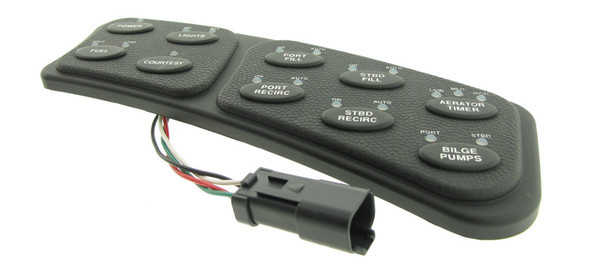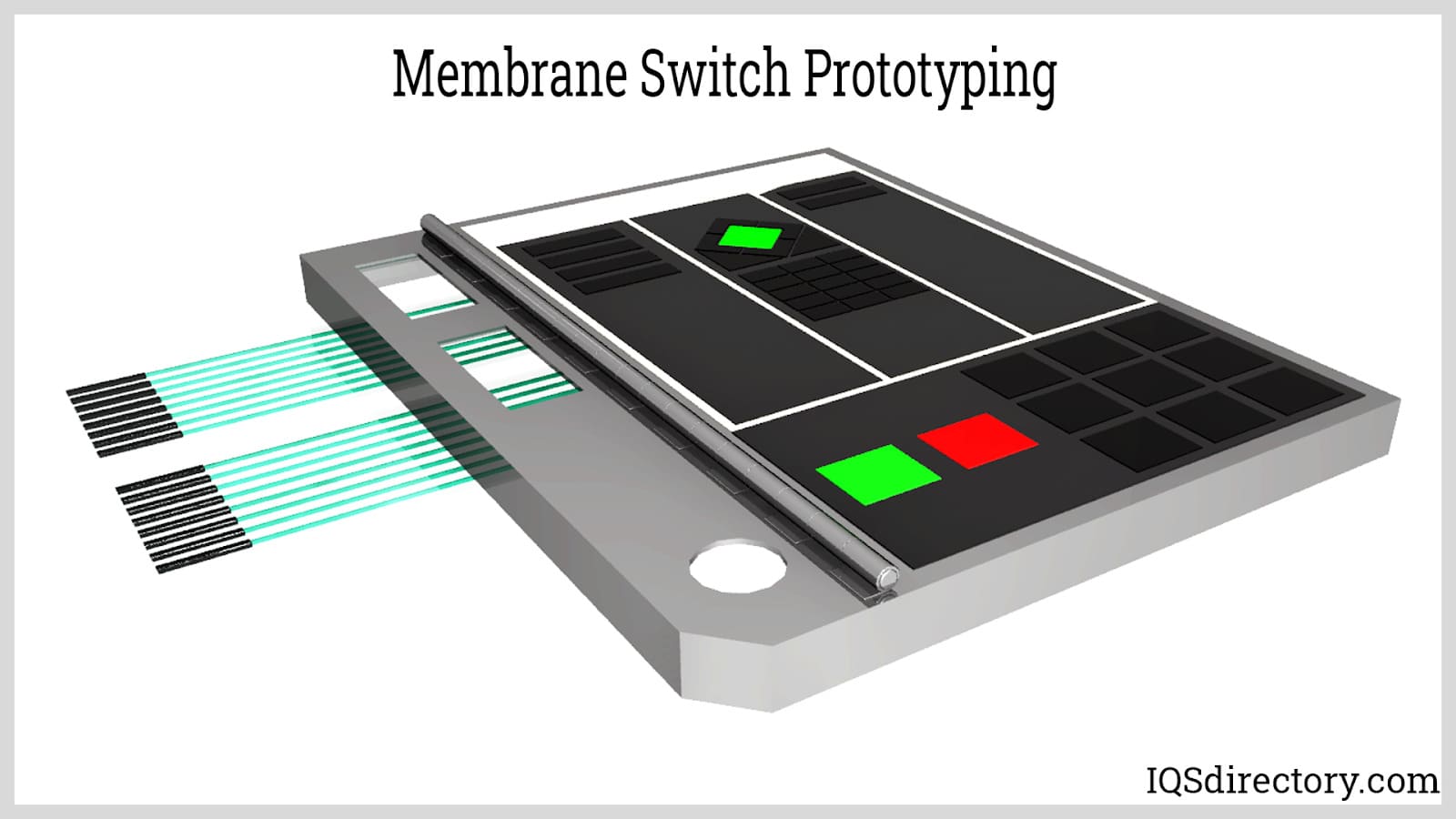Comprehending the Relevance of Membrane Layer Switch Over in Modern Electronics
Membrane layer switches are essential parts in modern-day digital gadgets. They provide a blend of performance and style that improves individual interaction. Their light-weight and long lasting nature makes them appropriate for different applications. As markets develop, the need for modification and advanced functions expands. Comprehending how membrane switches over add to advancement reveals their importance fit the future of electronics. What exists in advance for this innovation?
The Basics of Membrane Switch Over Modern Technology
Although usually overlooked, membrane layer button modern technology plays a crucial duty in the modern electronics landscape - membrane switch. These gadgets, composed of several layers, act as user interfaces for different digital products, ranging from house home appliances to clinical equipment. A normal membrane layer button contains a graphic overlay, a spacer layer, and a circuit layer, which are diligently constructed to produce a practical interface.When stress is used to the overlay, the circuit layer is finished, allowing signals to be sent to the device. This technology is recognized for its convenience, making it possible for modification in functionality, form, and style to meet specific user demands. In addition, membrane buttons are slim and lightweight, making them ideal for applications where room is a premium. Their resilience and resistance to ecological elements additionally enhance their charm, guaranteeing they can hold up against severe problems while maintaining capability. Overall, membrane layer button innovation is integral to creating reliable and easy to use digital gadgets

Secret Advantages of Membrane Switches Over
Membrane layer switches offer numerous essential benefits that make them a preferred option in different digital applications. Their design enables for a portable type factor, allowing manufacturers to develop smooth and light-weight tools. In addition, membrane switches are immune to dirt, wetness, and chemicals, which enhances their durability and long life in demanding atmospheres. The tactile feedback provided by these switches can improve user experience, making them simple and intuitive to operate.Furthermore, membrane switches can be customized with diverse graphics and shades, permitting for special branding opportunities. The production process is generally economical, specifically for high-volume manufacturing, as it minimizes setting up time and simplifies design. Finally, membrane layer changes need marginal upkeep, contributing to lower general functional prices. These benefits underscore their growing appeal in contemporary electronics, where reliability and easy to use user interfaces are crucial.

Applications Throughout Numerous Industries
The adaptability of membrane switches allows their extensive fostering across various sectors. In the clinical area, they are commonly made use of in diagnostic equipment and patient monitoring systems, supplying a durable user interface immune to pollutants. The auto sector uses membrane layer switches for control panel controls, enhancing user experience with smooth designs that endure extreme conditions. In customer electronics, they function as control panels for devices such as microwaves and coffee makers, providing an user-friendly user interface that is easy to clean. The aerospace market employs membrane buttons in cockpit controls, where integrity and area effectiveness are critical. Furthermore, the industrial sector leverages these buttons in equipment and control systems to ensure durable procedure popular settings. This broad series of applications underscores the versatility of membrane buttons, making them essential parts in improving performance and individual you could try here communication throughout varied technological landscapes.
Modification and Style Adaptability

Future Fads in Membrane Layer Switch Growth
Emerging fads in membrane layer switch growth indicate a growing emphasis on improved performance and integration with clever technologies. As customer need for a lot more sophisticated electronic gadgets rises, producers are concentrating on developing membrane switches that not only offer standard functional duties but additionally incorporate functions like touch sensitivity, backlighting, and haptic feedback.Furthermore, advancements in products are anticipated to improve resilience and ecological resistance, making membrane layer switches over suitable for varied applications in markets such as medical care, vehicle, and customer electronics. The integration of capacitive touch technology is most likely to end up being much more widespread, enabling sleeker designs and boosted user interfaces. membrane switch.Additionally, the increase of the Web of Things (IoT) is motivating the advancement of membrane layer switches that can interact wirelessly with various other devices, improving interconnectivity. In general, the future of membrane layer switch modern technology appears appealing, driven by advancement and the quest of user-friendly options
Regularly Asked Inquiries
Exactly How Do Membrane Layer Changes Compare to Traditional Mechanical Switches?
Membrane layer buttons, being much more space-efficient and providing a smooth layout, comparison with conventional mechanical buttons that offer tactile responses. The previous usually feature customizable graphics, while the latter commonly guarantee longevity and dependability in various applications.
What Products Are Commonly Made Use Of in Membrane Layer Switch Production?
Membrane switches are commonly created using products such as polyester, polycarbonate, and published conductive inks. These products offer responsiveness, longevity, and flexibility, making them appropriate for numerous applications in electronic tools and customer interfaces.
Can Membrane Layer Changes Be Fixed or Recycled?
Membrane switches can frequently be repaired, particularly if minor concerns arise, such as adhesive failure or surface damage. Full reuse is commonly limited due to wear and potential degradation of products over time.
Exactly How Do Environmental Variables Affect Membrane Switch Performance?
Ecological aspects, such as moisture, exposure, and temperature to chemicals, considerably influence membrane button efficiency. Severe problems can cause destruction, influencing responsiveness and long life, ultimately jeopardizing the performance great site of the tool in different applications.
What Is the Normal Life-span of a Membrane Layer Switch over?
The why not look here common life expectancy of a membrane layer button generally varies from 1 to 5 million actuations, depending on elements such as use frequency, environmental problems, and the products utilized in production, impacting durability and performance durability. A typical membrane layer button consists of a graphic overlay, a spacer layer, and a circuit layer, which are thoroughly put together to produce a functional interface - membrane switch.When stress is applied to the overlay, the circuit layer is finished, allowing signals to be sent to the tool. The tactile responses provided by these buttons can enhance customer experience, making them easy and instinctive to operate.Furthermore, membrane switches can be customized with diverse graphics and colors, allowing for one-of-a-kind branding opportunities. As customer need for extra sophisticated digital gadgets boosts, makers are concentrating on developing membrane switches that not only offer standard functional roles yet likewise integrate functions like touch sensitivity, backlighting, and haptic feedback.Furthermore, innovations in materials are anticipated to boost toughness and ecological resistance, making membrane layer switches ideal for varied applications in industries such as health care, vehicle, and customer electronic devices. The integration of capacitive touch innovation is likely to become much more common, permitting for sleeker layouts and improved user interfaces.Additionally, the rise of the Web of Things (IoT) is motivating the advancement of membrane changes that can interact wirelessly with various other tools, enhancing interconnectivity. Membrane layer buttons, being much more space-efficient and using a streamlined design, contrast with standard mechanical buttons that supply tactile responses